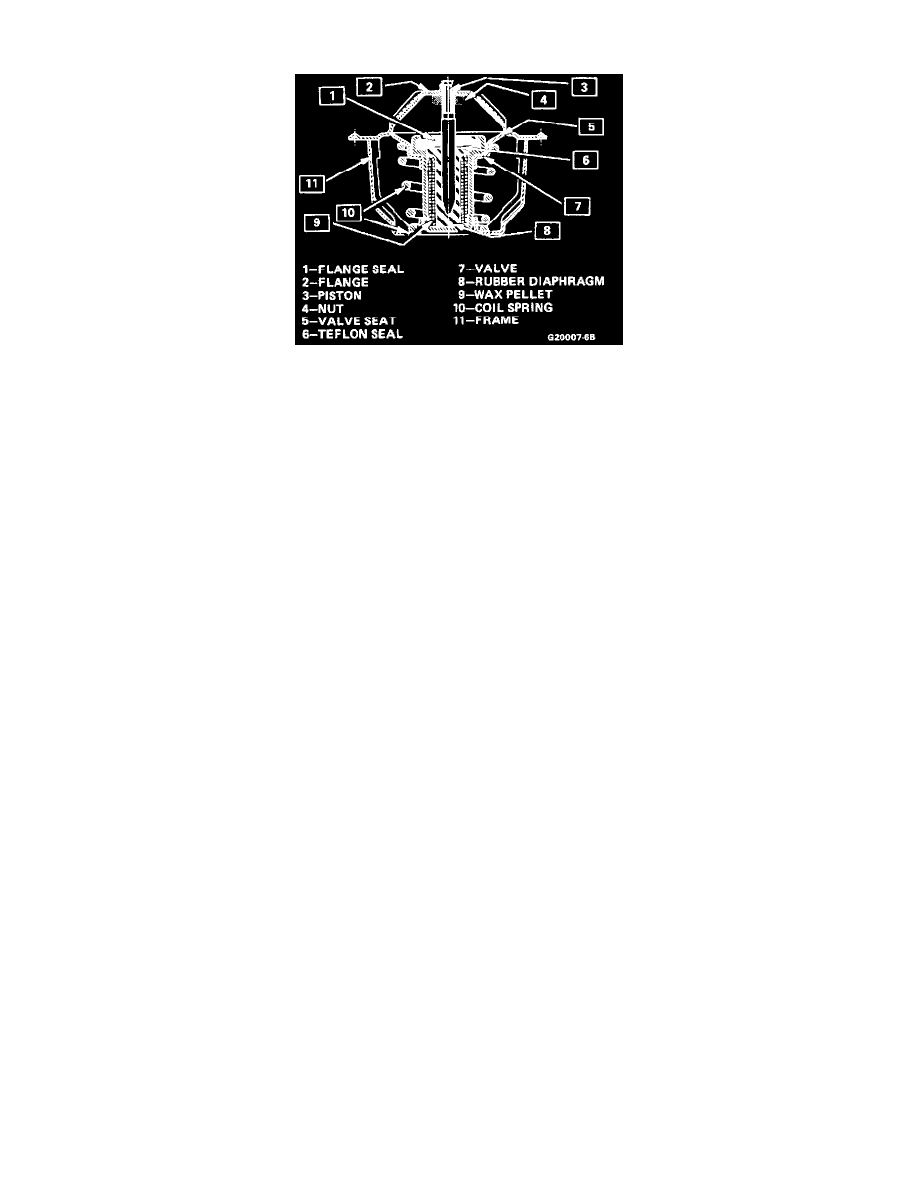LeSabre V6-231 3.8L VIN C SFI (1990)

Thermostat: Description and Operation
Typical Pellet-Type Thermostat
A pellet-type thermostat is used in the coolant outlet passage to control the flow of coolant. It provides faster engine warmup and regulates coolant
temperatures. A wax pellet or power element in the thermostat expands when heated and contracts when cooled. The pellet is connected by a piston to a
metal valve. When the pellet is heated, pressure against the valve forces it to open. As the pellet cools, contraction allows a spring to close the valve.
Thus, the valve remains closed while the coolant is cold; this prevents coolant circulation through the radiator, but allows the coolant to circulate through
the engine to warm it quickly and evenly.
As the engine becomes warm, the pellet expand and the thermostat valve opens. This lets coolant flow through the radiator, where heat is passed through
the radiator walls. This opening and closing of the thermostat valve allows enough coolant to enter the radiator to keep the engine within specified
temperature limits.
All engines use a 91°C (195°F) thermostat. Using thermostats rated above these control temperatures is not recommended. Higher temperature
thermostats will not provide faster warmup, since their valves remain tightly closed until the control temperature is reached, as does a lower temperature
thermostat.
Thermostats are designed to open and close a preset temperatures. If a thermostat does not, operate properly, it should be removed, inspected and tested.
